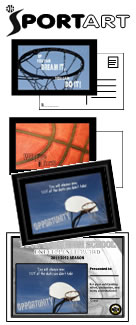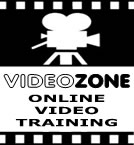 Good footwork is so important in basketball, without it, its hard to move with the ball and off the ball. Great footwork is essential for playing defense, rebounding, ball handling, and virtually all other types of skills. Teaching proper footwork should be an important part of every basketball program. Using proper footwork makes the average player better and a great assist to team play. It is a bigger compliment to a player to say he is hard to defend, than say he is a great shooter. Mastery of this fundamental helps players to free themselves without assistance from a teammate. Good footwork is so important in basketball, without it, its hard to move with the ball and off the ball. Great footwork is essential for playing defense, rebounding, ball handling, and virtually all other types of skills. Teaching proper footwork should be an important part of every basketball program. Using proper footwork makes the average player better and a great assist to team play. It is a bigger compliment to a player to say he is hard to defend, than say he is a great shooter. Mastery of this fundamental helps players to free themselves without assistance from a teammate.
Footwork Drills
Footwork Videos
Balance
Quality balance skills in the game of basketball are crucial to success. By keeping your feet shoulder width apart, you'll get the proper support base you need to stay strong against your opponent. Keep a good bend at the knees and the waist. Keep your head just above the midpoint between both feet.
Pivot
Developing great pivot skills will help you get out of many tight situations and be move effective to your team. Stay on the ball of your pivot foot and don't allow it to come off the floor until you dribble, shoot, or pass the ball. Do not drag or slide your pivot foot.
In the post, a good move is the drop step. If you have the ball on the low block and the player guarding you is on the high side (closer to the free throw line), make the foot closest to the foul line your pivot foot and take a strong step with the opposite foot directly toward the basket. This allows you to seal your opponent on your butt behind you.
In general, if your pivot foot moves and you don't dribble, shoot or pass, it's called traveling, and the ball is awarded to the opponent. A reverse or back pivot is when you turn backwards and when you turn forwards it's called a forward or front pivot
There are many reasons to pivot, including to get open and to give yourself an open shot. If you don't get comfortable performing pivots, you'll never be an effective ball player.
Quick Pivot
We can't emphasize the need to stay on the balls of your feet. This is be helpful when it comes time to make quick pivots or fast cuts. As you make your move, you'll be able to maintain your balance much better by remaining on the balls of your feet. Since you have to be on the balls of your feet to move anyway, by playing on them, you will make your move more quickly
Positive Footwork
Keep your free foot slightly in front of your pivot foot as you're squaring up so you gain the best position to attack your opponent. If you allow your free foot to end up behind your pivot foot, you'll allow your defender an opportunity to apply pressure and "belly up" to you. This gets you on your back foot, off balance and retreating from the basket.
H O O P E R X F O O T W O R K X T I P S |
THE V-CUT
The easiest way to get open is to use what's called a "V-cut". Basically, a V-cut is a hard fake toward the rim, followed by a sharp cut back out toward the ball. If viewed from above or drawn on a diagram, the cut looks like a giant V, hence the name. The key is to sell the cut to the basket and as the defender turns his hips, that's when you plant and "explode" back out toward the ball. A very effective off the ball move. I use it quite often in my game.
BALANCE
Balance is one of the most important things to remember in the game of basketball. To have good physical balance you should have a wide base of support by keeping your feet at least shoulder width apart. A good bend at the knees and the waist will also help. Now, try to keep your head just above the midpoint between both feet . In this position you have the most physical balance possible.
L-CUT
When executing an "L-Cut" you start at the block on the edge of the free throw lane and walk your defender up the side of the lane. When your teammate is ready to deliver the pass you step into the defender, make contact, and change speeds quickly by pushing off of your inside foot to pop out to the wing.
HOW TO PIVOT
The pivot is a fundamental skill that can get a player relief from pressure defense, and can be a great skill to have to begin an offensive move. To pivot, turn on the ball of your foot. Once you choose your pivot foot, it must maintain contact with the ground until you dribble, shoot or pass. (You can go airborne to shoot or pass) If your pivot foot moves and you do not dribble, shoot or pass, it is a violation called traveling, and the ball is awarded to the other team. A reverse or back pivot is when you turn backwards and when you turn forwards it is called a forward or front pivot.
POSITIVE FOOTWORK
Once you have recieved a pass and faced the basket, you have probably established a pivot foot. That foot may no longer move until the ball leaves your hand when you dribble. POSITIVE FOOTWORK is a term that describes your "free" foot. Regardless of the manner in which you square up, your free foot should remain slightly in front of your pivot foot. This allows the offensive player to remain in charge and gives the ability to attack the defender. A player should not allow the free foot to end up in a position BEHIND the pivot foot, as this will give the defender an opportunity to apply pressure and "belly up" to the ballhandler, putting the ballhandler on his back foot and retreating from the basket.
Once a foot is free, that is the only foot that the player can fake or step with. "The foot that moves is the foot that goes!"
Time to get to work,
Coach O
|





 Good footwork is so important in basketball, without it, its hard to move with the ball and off the ball. Great footwork is essential for playing defense, rebounding, ball handling, and virtually all other types of skills. Teaching proper footwork should be an important part of every basketball program. Using proper footwork makes the average player better and a great assist to team play. It is a bigger compliment to a player to say he is hard to defend, than say he is a great shooter. Mastery of this fundamental helps players to free themselves without assistance from a teammate.
Good footwork is so important in basketball, without it, its hard to move with the ball and off the ball. Great footwork is essential for playing defense, rebounding, ball handling, and virtually all other types of skills. Teaching proper footwork should be an important part of every basketball program. Using proper footwork makes the average player better and a great assist to team play. It is a bigger compliment to a player to say he is hard to defend, than say he is a great shooter. Mastery of this fundamental helps players to free themselves without assistance from a teammate.